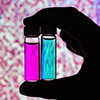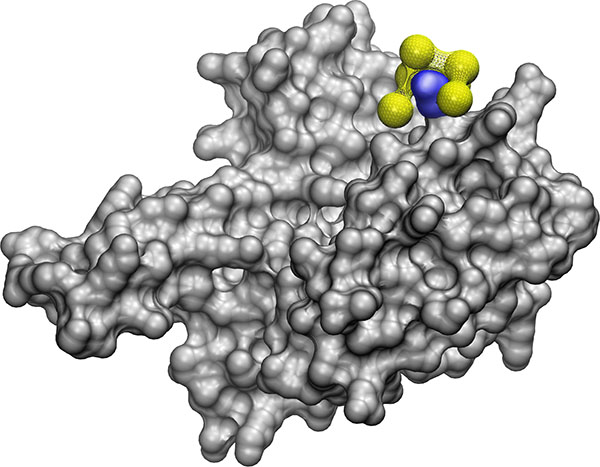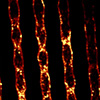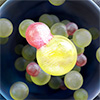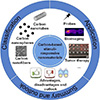Jun 05, 2023 (Nanowerk News) Cancer surgeons may soon have a more complete view of tumors during surgery thanks to new imaging agents that can illuminate multiple biomarkers at once, University of Illinois Urbana-Champaign researchers report. The fluorescent nanoparticles, wrapped in the membranes of red blood cells, target tumors better...
Disks, spikes and clouds
Jun 05, 2023 (Nanowerk News) The detection of gravitational waves produced by the merger of black holes is teaching us a lot about the properties of these extreme objects. A team of researchers in the group of Gianfranco Bertone at the University of Amsterdam is devising new techniques to extract...
AI for discovering where and how nanoparticles bind with proteins
Jun 05, 2023 (Nanowerk News) Identifying whether and how a nanoparticle and protein will bind with one another is an important step toward being able to design antibiotics and antivirals on demand, and a computer model developed at the University of Michigan can do it. The new tool could help...
3D printed nanocomposite sensor for water pollution monitoring
Jun 05, 2023 (Nanowerk News) A new form of low-cost, 3D-printed water pollution sensor could make a splash in the world of environmental monitoring, its developers say. A team of researchers from universities in Scotland, Portugal and Germany developed the sensor, which can help detect the presence of very low...
Quantum effects detected in hydrogen and noble gas collisions
Jun 05, 2023 (Nanowerk News) A Freie Universität Berlin research team headed by quantum physicist Professor Christiane Koch has demonstrated how hydrogen molecules behave when they collide with noble gas atoms such as helium or neon. In an article published in the journal Science ("Tomography of Feshbach resonance states"), the...
Carbon-based stimuli-responsive nanomaterials: classification and application
Jun 05, 2023 (Nanowerk News) Carbon-based stimuli-responsive nanomaterials are gaining much attention due to their versatility, including disease diagnosis and treatment. They work under endogenous (pH, temperature, enzyme, and redox) or exogenous (temperature, light, magnetic field, ultrasound) stimuli. Carbon-based stimuli-responsive nanomaterials can be used as smart materials with dynamically tunable...

